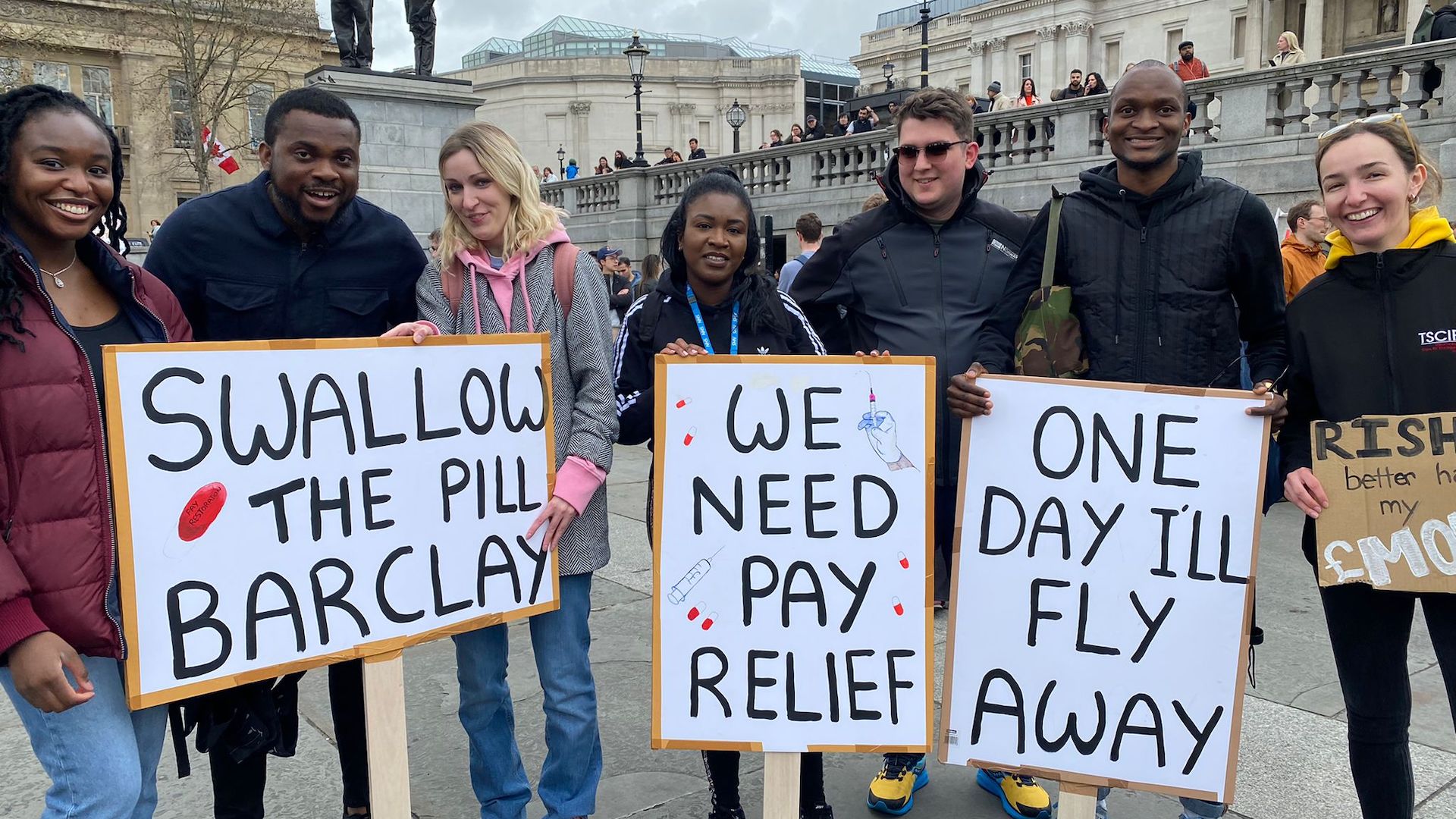Tens of thousands of junior doctors have walked out of hospitals in England for the third time this year on a 72-hour strike, with the NHS expecting “enormous disruption” to almost all routine or pre-planned care.
There’s likely to be more strikes on the horizon from train drivers, too, who have voted to continue strike action for the next six months. Announcing the results of the strike ballot, Aslef said the yes vote showed its members are “in it for the long haul”.
And despite the government recently reaching a pay deal with one million health workers, this was rejected by nurses who are currently voting on whether they want to continue strike action for more.
Seeing their wages devalued by high inflation is precisely why nurses, train drivers and junior doctors have participated in strike action, but industrial action can take a huge financial toll on those who take part.
By going on strike, any employee is breaking their contract with their employer which entitles them to payment for a day or shift of work. This means that employers can deduct pay from their employees’ wages for the time they spend on the picket line. So if someone goes on strike for one week, they can expect to lose a week’s pay.
However, some unions offer their members who are on strike an allowance to help cover their daily costs – sometimes referred to as strike pay. Most unions have hardship funds to support their members who suffer a particularly large financial hit by participating in industrial action.









